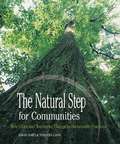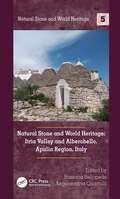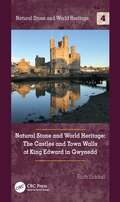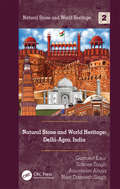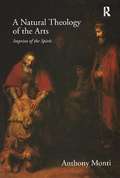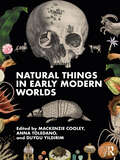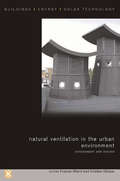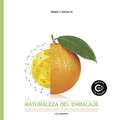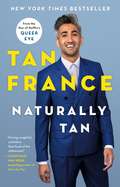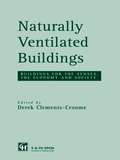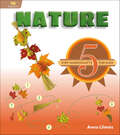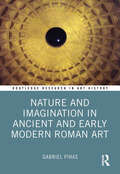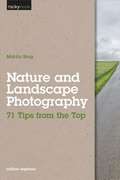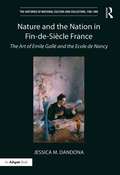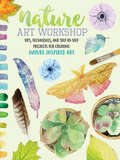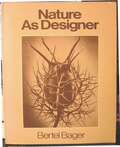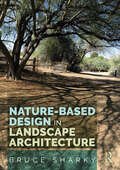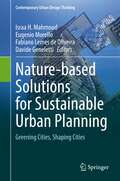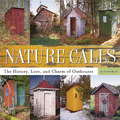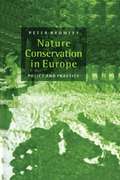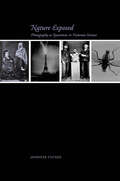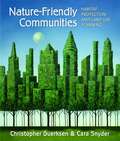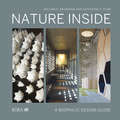- Table View
- List View
The Natural Step for Communities
by Sarah James Torbjörn LahtiSustainability may seem like one more buzzword and cities and towns like the last places to change, but The Natural Step for Communities provides inspiring examples of communities that have made dramatic changes toward sustainability and explains how others can emulate their success.Chronicled in the book are towns like Övertorneå, whose government operations recently became 100 percent fossil fuel-free, demonstrating that unsustainable municipal practices really can be overhauled. Arguing that the process of introducing change--whether converting to renewable energy or designing compact development--is critical to success, the authors outline why well-intentioned proposals often fail to win community approval and why an integrated approach--not "single-issue" initiatives--can surmount challenges of conflicting priorities, scarce resources and turf battles.The book first clarifies the concept of sustainability, offering guiding principles--the Natural Step framework--that help identify sustainable action in any area. It then introduces the 60+ eco-municipalities of Sweden that have adopted changes to sustainable practices throughout municipal policies and operations. The third section explains how they did it and outlines how other communities in North America and elsewhere can do the same. Key to success is a democratic, "bottom-up" change process and clear guiding sustainability principles, such as the Natural Step framework.The book will appeal to both general readers wishing to understand better what sustainability means and practitioners interested in introducing or expanding sustainable development in their communities.Sarah James is the principal of a community planning consulting firm. She co-authored the American Planning Association's Planning for Sustainability Policy Guide and has published articles throughout the U.S. on this subject.Torbjörn Lahti was the planner for Sweden's first eco-municipality and is directing a five-year sustainable community demonstration project. He was instrumental in forming the Swedish National Association of Eco-municipalities.
Natural Stone and World Heritage: Itria Valley and Alberobello, Apulia Region, Italy (ISSN)
by Rossana Bellopede Angelamaria QuartulliApulian limestones constitute the historic building constructions of the Puglia region (in the south of Italy) named trulli (representing an outstanding universal value for UNESCO), but also other stone buildings of the well-known Itria Valley. Trulli are drywall (mortarless) constructions made of roughly worked limestone blocks collected from neighbouring fields. The limestone for trulli is quarried from different Apulian localities and, together with another local lithotype, represents the stone heritage of the Itria Valley.This book begins with an introduction to the region of southern Italy where trulli and other typical stone architecture can be found. The Itria Valley with its towns and landscape and the town of Alberobello are described from an architectural point of view. The second section describes the different examples of building constructions in local stone of the Itria Valley, focusing on ancient and contemporary quarries. In this part petrographic and physical mechanical characteristics of the main kind of limestones are reported and discussed. The third part focuses on the main examples of stone architecture of Itria Valley, distinguishing the historical rural buildings from the other historical civil ones. In this section particular attention is given to best practices of evaluation action, protection rules and restoration methods for stone heritage in Itria Valley and Alberobello.This book serves as a useful source of information to geologists, archaeologists, architects, historians and stone industry operators specifically, and to academic and non-academic communities, travellers, and tourism industry operators in general. The book will also be of interest to students, researchers, and rock enthusiasts spanning all age groups and academic levels.
Natural Stone and World Heritage: The Castles and Town Walls of King Edward in Gwynedd (Natural Stone and World Heritage)
by Ruth SiddallThis book is about the stone used to build the castles of Edward I in North West Wales. It provides a description of the available geological resources and the building materials used in the construction of Caernarfon, Conwy, Harlech and Beaumaris Castles. It takes a broad view of this subject, placing the stone used in the castles in the context of both earlier and later buildings across the region of study, from the Neolithic up until the present day. The book will serve as a useful source book for geologists, archaeologists, architects, representatives of the natural stone industry, historians and cultural heritage management professionals specifically and for academic and non-academic communities, travellers and tourism industry operators in general.
Natural Stone and World Heritage: Delhi-Agra, India (Natural Stone and World Heritage)
by Gurmeet Kaur Sakoon N. Singh Anuvinder Ahuja Noor Dasmesh SinghThis book discusses heritage stones which were used in the making of the architectonic heritage of Delhi and Agra, encompassing UNESCO world heritage sites and heritage sites designated as prominent by the Indian government. The most famous monument of the two cities is the ‘Taj Mahal’ of Agra. The book focuses on the geological characteristics of the famous Makrana marble, red sandstone and other sandstone variants of the Vindhyan basin and Delhi quartzite, the most widely used stones in almost all the monuments, as well as on their quarries. The work also aims to sensitise the public to protecting and preserving the architectonic heritage of these two densely populated cities in India as repositories of our past cultures and traditions. Identifying the nature and provenance of stones/rocks used in construction will lead to better restoration for future generations, in light of the deterioration of architectonic heritage through various natural weathering agencies and anthropogenic activities. The book will serve as a useful source book to economic geologists, geologists, archaeologists, architects, historians and stone industry operators specifically and to academic and non-academic communities, travellers and tourism industry operators in general. The book will benefit students, researchers, and rock enthusiasts spanning all age groups and academic levels.
A Natural Theology of the Arts: Imprint of the Spirit
by Anthony MontiA Natural Theology of the Arts contends that the arts are theological by their very nature and not simply when they are explicitly religious - thereby constituting a distinctive kind of 'natural theology'. Borrowing from science the stance of 'critical realism' to justify truth claims in art and theology, it argues that works of art are complex metaphors that convey the 'real presence' of God, even when not labeled as such.
Natural Things in Early Modern Worlds
by Mackenzie Cooley Anna Toledano Duygu YıldırımThe essays and original visualizations collected in Natural Things in Early Modern Worlds explore the relationships among natural things—ranging from pollen in a gust of wind to a carnivorous pitcher plant to a shell-like skinned armadillo—and the humans enthralled with them. Episodes from 1500 to the early 1900s reveal connected histories across early modern worlds as natural things traveled across the Indian Ocean, the Ottoman Empire, Pacific islands, Southeast Asia, the Spanish Empire, and Western Europe. In distant worlds that were constantly changing with expanding networks of trade, colonial aspirations, and the rise of empiricism, natural things obtained new meanings and became alienated from their origins. Tracing the processes of their displacement, each chapter starts with a piece of original artwork that relies on digital collage to pull image sources out of place and to represent meanings that natural things lost and remade. Accessible and elegant, Natural Things is the first study of its kind to combine original visualizations with the history of science. Museum-goers, scholars, scientists, and students will find new histories of nature and collecting within. Its playful visuality will capture the imagination of non-academic and academic readers alike while reminding us of the alienating capacity of the modern life sciences.
Natural Ventilation in the Urban Environment: Assessment and Design (BEST (Buildings Energy and Solar Technology))
by Francis Allard Cristian GhiausThroughout the world, there is an increasing interest in ecological design of buildings, and natural ventilation has proved to be the most efficient low-energy cooling technique. Its practical application, however, is hindered by the lack of information on the complex relationship between the building and its urban environment. In this book, a team of experts provide first-hand information and tools on the efficient use of natural ventilation in urban buildings. Key design principles are explained, enabling readers to decide on the best solution for natural ventilation of buildings, taking into account climate and urban context. In the initial sketches, architects need answers to open problems such as 'what kind of solution to adopt' and 'how to modify existing strategies to exploit the potential of the site'. This book formalizes the multi-criteria analysis of candidate solutions based on quantitative and qualitative estimation of the driving forces (wind and buoyancy), as well as of the barriers induced by the urban environment (wind speed reduction, noise and pollution) and gives a methodology for optimal design of openings. The book is accompanied by a FREE CD, containing software for assessing the potential of a given site, estimating wind speed and dimensioning the openings for natural ventilation. The methodologies and tools are tested, self-contained and user friendly. About the editors The editors, Cristian Ghiaus and Francis Allard, are affiliated with the University of La Rochelle, France. The authors and reviewers combine expertise from universities, research institutions and industry in Belgium, France, Great Britain, Greece, Portugal and Switzerland.
La naturaleza del embalaje: La naturaleza como fuente de innovación para empaques
by Sergio F. GrijalvaLa naturaleza como fuente de innovación para empaques. Explorar la naturaleza del embalaje significa observar de cerca cómo la vida envuelve, protege, contiene, preserva e incluso transporta y comunica sus palpitantes creaciones, con la intención de descubrir de qué manera ha resuelto los problemas y aciertos que enfrenta el diseño industrial de embalajes: ¿qué geometrías permiten aprovechar mejor el espacio y el material? ¿Qué lecciones encierran los huevos de gallina o las conchas de los moluscos a propósito de protección a impactos? ¿Qué nos enseñan las envolturas de productos vegetales como las cebollas o las mazorcas de maíz acerca de la conservación de la hidratación? O bien, ¿qué podemos aprender del hecho de que en la naturaleza no exista el desperdicio, pues todos sus diseños son íntegramente biodegradables y vuelven a nutrir el ciclo del que proceden? Todas estas y muchas otras cuestiones afines son abordadas y respondidas en este libro, a lo largo de la envolvente inmersión en el mundo de los embalajes naturales que se despliega entre sus páginas: un exuberante recorrido a través de pieles, cáscaras, pétalos, cortezas, conchas, caparazones y muchos otros ejemplos de superficies organizadas, cuyo examen atento depara hallazgos sorprendentes e inspiradores que abren a su vez vías sugerentes e inexploradas para la innovación y el perfeccionamiento de los envases, envolturas y empaques diseñados por el hombre.
Naturalism’s Imaginary Museum, French Art, and the Eclectic Nineteenth Century (University of Toronto Romance Series)
by Sara PappasNaturalism’s Imaginary Museum, French Art, and the Eclectic Nineteenth Century examines one of the most revered art historical narratives of Western art: the famous turning point for painting and sculpture usually emblematized by the works of Édouard Manet and then the Impressionists. Instead of the usual revaluation of this turning point, Sara Pappas argues for the importance of the failure to find a cohesive story for the art world in the period itself, a difficulty that carries forward to galleries today. In order to demonstrate the importance of incongruity and disorder, Pappas brings together two worlds that may seem incompatible: nineteenth-century literary writers involved in naturalism and the organization of permanent collections of later nineteenth-century French art in today’s museums. Drawing on the art novels and art criticism of these writers, the book provides optimal access to the questions that continue to haunt the categorization and display of nineteenth-century art.
Naturally Tan: A Memoir
by Tan FranceA USA Today Hottest Book of the Summer for 2019!A Best Nonfiction Book for 2019 in Women's Day!One of Hello Giggles's "Most Anticipated Books of 2019 to Add to Your Reading List"!“Just when I thought I knew everything about Tan, he hits me with this. His story is so heartwarming, and wickedly funny.” —Antoni PorowskiIn this heartfelt, funny, and touching memoir, one of the stars of Netflix’s Emmy Award-winning smash-hit Queer Eye reveals how an Englishman raised in a traditionally religious home became a fashion icon—and the first openly gay, South Asian man on television—simply by being Naturally Tan.In this heartfelt, funny, touching memoir, Tan France tells his origin story for the first time. With his trademark wit, humor, and radical compassion, Tan reveals what it was like to grow up gay in a traditional South Asian family, as one of the few people of color in South Yorkshire, England. He illuminates his winding journey of coming of age, finding his voice (and style!), and marrying the love of his life—a Mormon cowboy from Salt Lake City. From one of the stars of Netflix’s runaway hit show Queer Eye, Naturally Tan is so much more than fashion dos and don’ts—though of course Tan can’t resist steering everyone away from bootcut jeans! Full of candid observations about U.S. and U.K. cultural differences, what he sees when you slide into his DMs, celebrity encounters, and the behind-the-scenes realities of “reality TV,” Naturally Tan gives us Tan’s unique perspective on the happiness to be found in being yourself.In Tan's own words, “The book is meant to spread joy, personal acceptance, and most of all understanding. Each of us is living our own private journey, and the more we know about each other, the healthier and happier the world will be.”
Naturally Ventilated Buildings: Building for the senses, the economy and society
by Derek Clements-CroomeWhile there are many historical examples of successful naturally ventilated buildings, standards for indoor climate have tended to emphasise active, mechanical airflow systems rather than passive natural systems. Despite its importance, knowledge about the performance of naturally ventilated buildings has remained comparatively sparse. With ten key research papers this book seeks to address this lack of information.
Nature: 5-Step Handicrafts for Kids (5-Step Handicrafts for Kids)
by Anna LlimósIn just five simple steps, children can make a variety of whimsical crafts such as a hanging mobile, a caterpillar, a maraca, and a sailboat out of objects found in nature. Fourteen projects make clever use of commonly available materials and simple tools, turning nuts, flowers, and clay into lasting crafts and toys. Children five years and older will develop fine motor skills, feed their creativity, and discover new uses for everyday objects. A ranking system for craft difficulty levels is included, from one star to four stars, for stress-free project selection.
Nature and Imagination in Ancient and Early Modern Roman Art (Routledge Research in Art History)
by Gabriel PihasThis volume uses the art of Rome to help us understand the radical historical break between the fundamental ancient pre-supposition that there is a natural world or cosmos situating human life, and the equally fundamental modern emphasis on human imagination and its creative power. Rome’s unique art history reveals a different side of the battle between ancients and moderns than that usually raised as an issue in the history of science and philosophy. The book traces the idea of a cosmos in pre-modern art in Rome, from the reception of Greek art in the Roman republic to the construction of the Pantheon, to early Christian art and architecture. It then sketches the disappearance of the presupposition of a cosmos in the High Renaissance and Baroque periods, as creativity became a new ideal. Through discussions of the art and architecture that defines proto-modern Rome— from Michelangelo’s terribilita’ in the Sistine Chapel, Caravaggio’s realism, Baroque illusionism, the infinities of Borromini’s architecture, to the Grand Tour’s representations of ruins— through an interpretation of such major issues and works, this book shows how modern art liberates us while leaving us feeling estranged from our grounding in the natural world. The book will be of interest to scholars working in art history, architectural history, classics, philosophy, and early modern history and culture.
Nature and Landscape Photography
by Martin BorgWhat happens when you bring two of your passions together? Magic, of course. Photography offers a perfect outlet for creativity and emotions. Nature provides peace, serenity, and a wellspring of energy. To combine both--to photograph nature--is a unique and fulfilling experience. In this book, renowned Swedish nature photographer Martin Borg shares his experience and insight along with 71 of his beautiful images that illustrate each point. He offers helpful advice for beginning to intermediate photographers, ranging from technical tips, to aesthetics, to philosophical thoughts on the essence of being a nature photographer.
Nature and the Nation in Fin-de-Siècle France: The Art of Emile Gallé and the Ecole de Nancy (The Histories of Material Culture and Collecting, 1700-1950)
by Jessica M. DandonaBy the time of his death in 1904, critics, arts reformers, and government officials were near universal in their praise of Art Nouveau designer Emile Gallé (1846–1904), whose works they described as the essence of French design. Many even went so far as to argue that the artist’s creations could reinvigorate France’s fading arts industries and help restore its economic prosperity by defining a modern style to represent the nation. For fin-de-siècle viewers, Gallé’s works constituted powerful reflections on the idea of national belonging, modernity, and the role of the arts in political engagement. While existing scholarship has largely focused on the artist’s innovative technical processes, a close analysis of Gallé’s works brings to light the surprisingly complex ways in which his fragile creations were imbricated in the political turmoil that characterized fin-de-siècle France. Examining Gallé’s works inspired by Japanese art, his patriotically inflected designs for the Universal Exposition of 1889, his artistic manifesto in support of Dreyfus created in 1900, and finally, his late works that explore the concept of evolution, this book reveals how Gallé returns again and again to the question of national identity as the central issue in his work.
Nature Art Workshop: Tips, Techniques, and Step-by-Step Projects for Creating Nature-Inspired Art
by Sarah Lorraine Edwards Mikko Sumulong Alyssa Stokes Katie BrooksA visual resource for artists and crafters who want to combine their talents with their love of the natural world.Each page of Nature Art Workshop engages, inspires, and encourages artists to see the world around them in a new light while they learn to create their own nature-inspired art.Four talented visual nature artists guide you through finding and prepping traditional media and natural elements to use in creating unique nature-inspired projects, following simple step-by-step instructions. Projects include a pressed-flower ceramic dish, fresh floral crown, and flower-adorned candles, in addition to painted feathers, stones, shells, leaves, and more. Valuable art tips and techniques offer guidance during the artistic process.A fun, refreshing approach to mixed-media art, Nature Art Workshop proves that you can turn anything into a stunning work of art with the right materials and a bit of imagination.
Nature As Designer: A Botanical Art Study
by Bertel BagerFrom Foreword: "...Dr. Bertel Bager, who has written, collected and assorted the material for this book over a long period of years, is a man who has long been associated with both art and nature. In addition to his position of chief surgeon at one of the largest hospitals in Sweden, he has made the study of design and nature his avocation. He annually enjoys tours of discovery in the Swedish countryside, searching the grasses and thistles, mosses and lichens, usually finding something worth collecting and meditating upon. Not primarily interested in bright colors, he is fasxcinated by meadows at the time they hav ebeen deserted by butterflies, and by mountain forests, the realm of timeless lichens and mosses. Long after the meadow has lost its summer glory, he seeks the unappreciated - the fruits and seedpods - swaying and rustling in the autumn winds. When winter comes, he stands meditating upon the expressive play of shadows of dead plants on the snow. What Bager is seeking above all, is the beauty of form in nature. Displayed in many cabinets is his treasured collection of specimens amassed over the years, much like a gallery, showing the fascinating forms of simple things in nature and emphasizing the theme, 'Nature as Designer.' This volume is a guided tour through part of these treasures but is meant to stimulate interest in form and to please the eye, which is the primary purpose of an illustrated book." Softcover, 8 x 10 inches, 176 pages, 191 black and white photographs.
Nature-Based Design in Landscape Architecture
by Bruce SharkyNature-Based Design in Landscape Architecture showcases a range of built works designed by landscape architects from many countries of the world representing diverse environmental regions and uses. These projects demonstrate the transformative potential of a nature-based approach to landscape architecture.The nature-based design approach supports and encourages natural regeneration with a view to promoting sustainable environments, preserving natural resources, and mitigating the impacts of climate change and development. The projects selected for this book demonstrate the potential of nature-based landscape design to support healthy, natural and managed ecosystems, sequester carbon, and support the recovery of biodiversity. In addition to examples of design-led environmental interventions, Nature-Based Design in Landscape Architecture, the book, also demonstrates the potential for nature-based design to improve people’s relationship with their surroundings by encouraging them to be active participants in their communities. As such, each project featured in the book promotes a discussion around future scenarios in which landscape architects can and will be engaged, from minimizing environmental impact through sustainable design to fostering social justice through community engagement.This book will be a welcome supplement for undergraduate landscape architecture, survey or design studio courses, and may also be used at the master’s degree level either as part of a landscape architecture survey seminar or early design studio.
Nature-based Solutions for Sustainable Urban Planning: Greening Cities, Shaping Cities (Contemporary Urban Design Thinking)
by Israa H. Mahmoud Eugenio Morello Fabiano Lemes de Oliveira Davide GenelettiUrban greening policies and measures have recently shown a high potential impact on the design and reshaping of the built environment, especially in urban regeneration processes. This book provides insights on analytical methods, planning strategies and shared governance tools for successfully integrating Nature-Based Solutions (NBS) in the urban planning practice. The selected contributions present real-life application cases, in which the mainstreaming of NBS are investigated according to two main challenges: the planning and designing of physical and spatial integration of NBS in cities on one side, and the implementation of suitable shared governance models and co-creation pathways on the other. Chapter 5 is available open access under a Creative Commons Attribution 4.0 International License via link.springer.com.
Nature by Design: The Practice of Biophilic Design
by Stephen R. KellertBiophilia is the theory that people possess an inherent affinity for nature, which developed during the long course of human evolution. In recent years, studies have revealed that this inclination continues to be a vital component to human health and wellbeing. Given the pace and scale of construction today with its adversarial, dominative relationship with nature, the integration of nature with the built environment is one of the greatest challenges of our time. In this sweeping examination, Stephen Kellert describes the basic principles, practices, and options for successfully implementing biophilic design. He shows us what is—and isn’t—good biophilic design using examples of workplaces, healthcare facilities, schools, commercial centers, religious structures, and hospitality settings. This book will to appeal to architects, designers, engineers, scholars of human evolutionary biology, and—with more than one hundred striking images of designs—anyone interested in nature‑inspired spaces.
Nature Calls
by Dottie BoothThe crunch of leaves under your feet, the sounds of nature around you, the smell of . . . well, never mind. In this engaging volume, Dottie Booth answers the call with a one-of-a-kind photographic tour of outhouses and privies around the world. Full of personal stories, historical facts, folklore (what did people use before toilet paper? why the crescent moon?), and over 75 full-color photographs, this book will bring back memories for anyone who has ever used an outhouse, and provide a privy primer for those who haven't. An entertaining and personal portrait of a disappearing part of the landscape, NATURE CALLS is a unique addition to any architectural, photographic, or historical collection.From the Trade Paperback edition.
Nature Conservation in Europe: Policy and Practice
by Peter BromleyThe Rio Summit has pointed to the urgency for the development of an international conservation policy; and the post-Maastricht debates in Europe have highlighted the need for the EU to reassess structural funding in nature conservation, as well as the influences on policy and practice.This book is a 'route map' through the legislative and policy frameworks and explains how conservation works in Europe. It goes through the policies for nature conservation in the European Community and its constituent member states and sets out the mechanisms for delivering this policy.An understanding of the European legislative framework is now vital as its influence on local practice increases. Practitioners in the fields of countryside conservation and general land management will find the book an essential guide to the working of the EU, as well as helping an appreciation of their local role within the wider community objectives. This will, for example allow a better understanding of the grant system which many managers are now using.
Nature Exposed: Photography as Eyewitness in Victorian Science
by Jennifer TuckerIn Nature Exposed, Jennifer Tucker studies the intersecting trajectories of photography and modern science in late Victorian Britain. She examines the role of photograph as witness in scientific investigation and explores the interplay between photography and scientific authority. Almost immediately after the invention of photography in 1839, photographs were characterized as offering objective access to reality—unmediated by human agency, political ties, or philosophy. This mechanical objectivity supposedly eliminated judgment and interpretation in reporting and picturing scientific results. But photography is a labor-intensive process that allows for, and sometimes requires, manipulation. In the late nineteenth century, the nature of this new technology sparked a complex debate about scientific practices and the value of the photographic images in the production and dissemination of scientific knowledge. Recovering the controversies and commentary surrounding the early creation of scientific photography and drawing on a wide range of new sources and critical theories, Tucker establishes a greater understanding of the rich visual culture of Victorian science and alternative forms of knowledge, including psychical research.
Nature-Friendly Communities: Habitat Protection And Land Use Planning
by Cara Snyder Chris DuerksenNature-Friendly Communities presents an authoritative and readable overview of the successful approaches to protecting biodiversity and natural areas in America's growing communities. Addressing the crucial issues of sprawl, open space, and political realities, Chris Duerksen and Cara Snyder explain the most effective steps that communities can take to protect nature. The book: documents the broad range of benefits, including economic impacts, resulting from comprehensive biodiversity protection efforts; identifies and disseminates information on replicable best community practices; establishes benchmarks for evaluating community biodiversity protection programs. Nine comprehensive case studies of communities explain how nature protection programs have been implemented. From Austin and Baltimore to Tucson and Minneapolis, the authors explore how different cities and counties have taken bold steps to successfully protect natural areas. Examining program structure and administration, land acquisition strategies and sources of funding, habitat restoration programs, social impacts, education efforts, and overall results, these case studies lay out perfect examples that other communities can easily follow. Among the case study sites are Sanibel Island, Florida; Austin, Texas; Baltimore County, Maryland; Charlotte Harbor, Florida; and Teton County, Wyoming. Nature-Friendly Communities offers a useful overview of the increasing number of communities that have established successful nature protection programs and the significant benefits those programs provide. It is an important new work for public officials, community activists, and anyone concerned with understanding or implementing local or regional biodiversity protection efforts.
Nature Inside: A biophilic design guide
by William D. Browning Catherine O. RyanWritten by a leading proponent of biophilic design, this is the only practical guide to biophilic design principles for interior designers. Describing the key benefits, principles and processes of biophilic design, Nature Inside illustrates the implementation of biophilic design in interior design practice, across a range of international case studies – at different scales, and different typologies. Starting with the principles of biophilic design, and the principles and processes in practice, the book then showcases a variety of interior spaces – residential, retail, workplace, hospitality, education, healthcare and manufacturing. The final chapter looks ‘outside the walls’, giving a case study at the campus and city scale. With practical guidance and real-world solutions that can be directly-applied in day-to-day practice, this is a must-have for designers interested in applying biophilic principles.
